Moustiers-Sainte-Marie is a picturesque village, in the département Alpes-de-Haute-Provence, within the breathtaking Parc Naturel Régional du Verdon whose headquarters are in Moustiers-Sainte-Marie. It was our final stop on our exploration of Les Gorges du Verdon. Like Tourtour, Moustiers-Sainte-Marie is also one of Les Plus Beaux Villages de France ~ the ‘Most Beautiful Villages in France’. With its pastel tiles, giggling fountains, ancient chapel, 12th century church and crumbling ramparts, the village is steeped in history. Hovering over it, suspended between the surrounding cliff tops, a mystical star is strung adding to the enchantment of this mystical place.
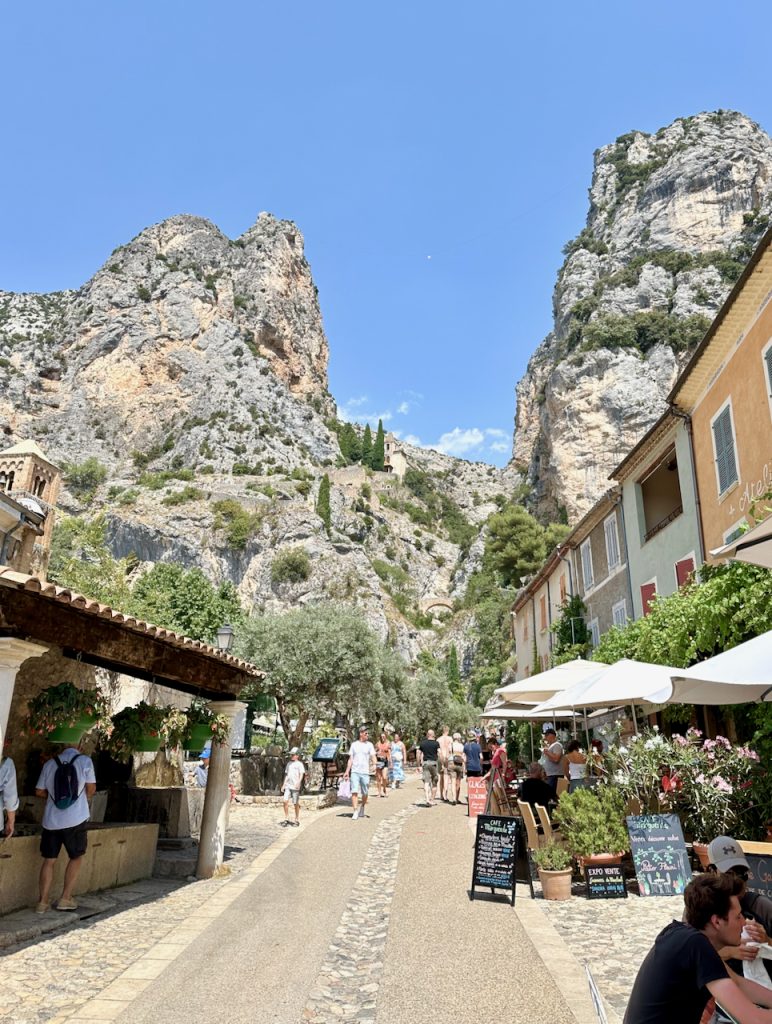
L’Etoile de Moustiers
There are many legends surrounding the origins of the star. One is to do with the Three Kings and another is connected to the Templars who reportedly put the star in place to provide a clue to the treasure they were going to hide in the mountains. The most well known legend is that of the Chevalier de Blacas, the grandson of the great Blacas de Blacas, a troubadour warrior. Chevalier de Blacas came from a noble French family near Aups and was captured by the enemy during a crusade. The legend says that he swore to hang a sixteen-pointed star, a symbol of his family, above Moustiers if he saw his country again to pay tribute to the Virgin Mary. There is no historical evidence to support this legend and most believe it comes from the imagination of the poet Frédéric Mistral.
Another legend says that two young lovers, forbidden to be together by their feuding families, committed suicide in Moustiers. Their two grief-stricken families strung the star to remember them and then reconciled.
Of the nearly twenty legends surrounding the star and chain of Moustiers-Sainte-Marie, none have been verified. To this day the origin and meaning of the star remains shrouded in mystery

The star we see today is probably the eleventh star known to have been hung above Moustiers. It was made in 1957. The chain is 135 m long and it weighs 150kg. In 1995 it was covered in gold leaves following a fall before it was placed back in position. Originally it had five points but this has changed over time.
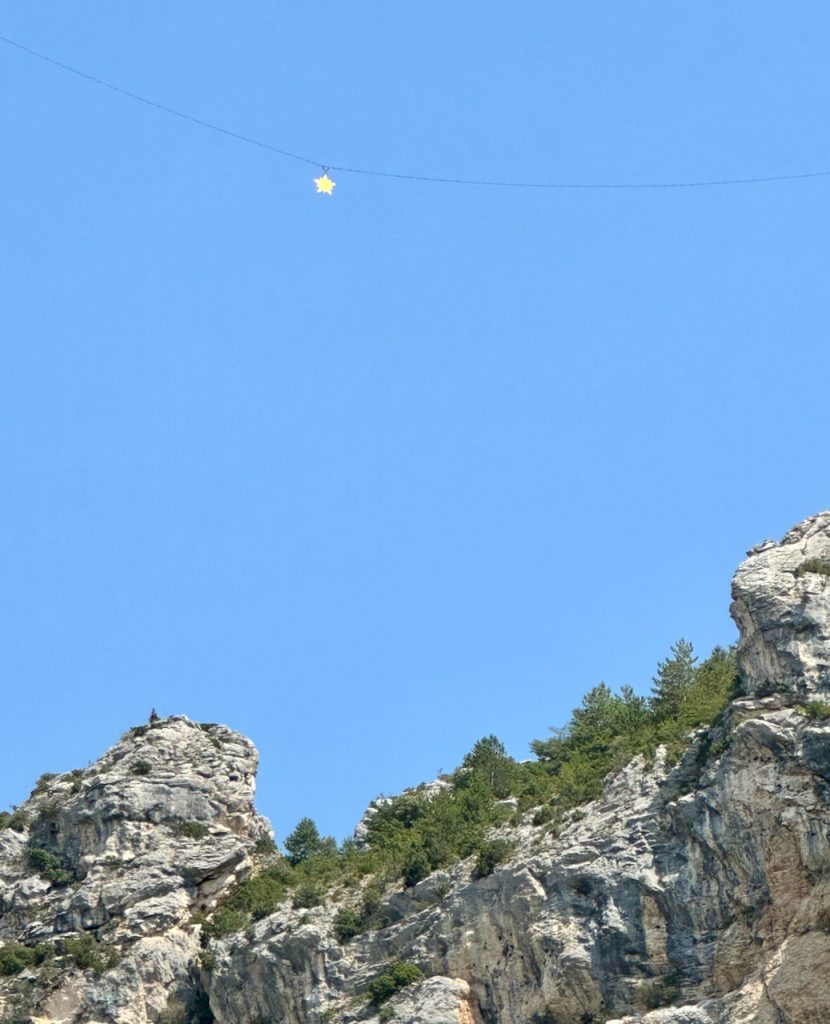
The Church of Our Lady of the Assumption
This Church of Our Lady of the Assumption dominates the up hill walk into the village. It dates from the 12th century and its’ Lombard bell tower is one of only three moving bell towers known in Europe. Rising to twenty-two meters in height, it’s divided into four floors with twin openings and is regarded as one of the most beautiful in Provence. In 1913 it was listed as a historical monument.
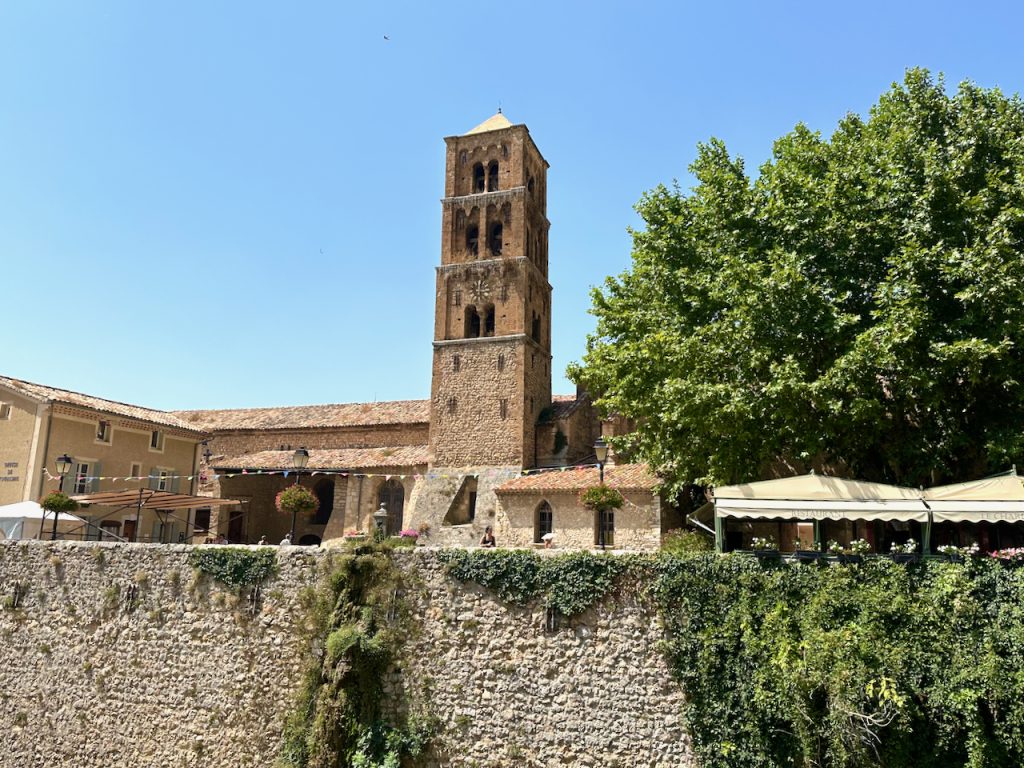
The 12th century Romanesque nave is divided into five bays with pointed barrel vaults. The pilasters flare out towards the top, as was common in Romanesque churches. Three semicircular vaulted chapels were added later and open onto this nave. Prior Pierre de Pratis, enlarged the church in 1336; the axis of the nave was not preserved possibly because the prior wanted to arrange the choir to be in the direction of Jerusalem or to recall the position of Christ’s head on the cross. The current altar is a fourth-century sarcophagus in white marble representing the crossing of the Red Sea.
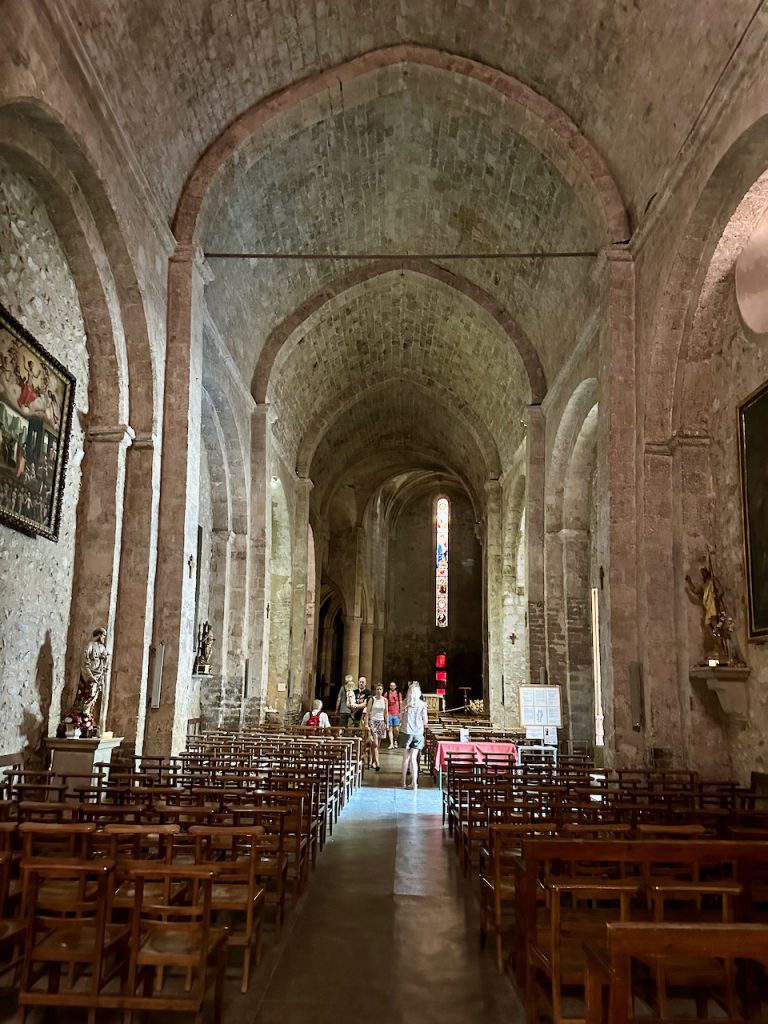
The chapel of Notre-Dame de Beauvoir
At the very top of the village sits a small 12th century chapel built on the remains of a 5th century Marian temple. A successful marriage of the Romanesque and Gothic periods, there are two bays with pointed barrel vaults, corresponding to part of the current nave. The other two bays, and the Gothic choir were added in 1536 as shown by the engraving on the triumphal arch.
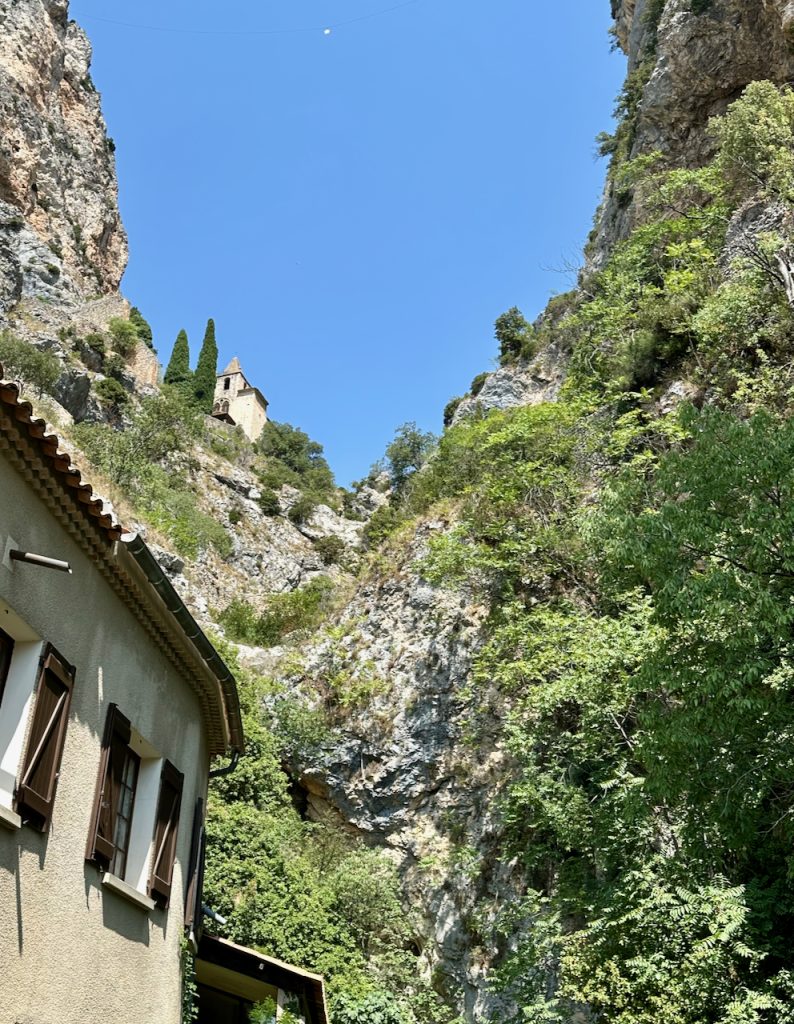
The chapel is reached via a 262 step (formerly 365) stone staircase on the hillside. The Seven oratories that line the path gave way in 1860 to the fourteen stations of the Way of the Cross. These were later decorated with earthenware tiles made by Simone Garnier.
Like other chapels in this area, the sanctuary of Notre Dame de Beauvoir is known for its “suscitations”. This is a 17th century legend, where stillborn children came back to life during their baptism, thus reaching heaven. The chapel of Notre-Dame de Beauvoir was classified as a Historic Monument in 1921.
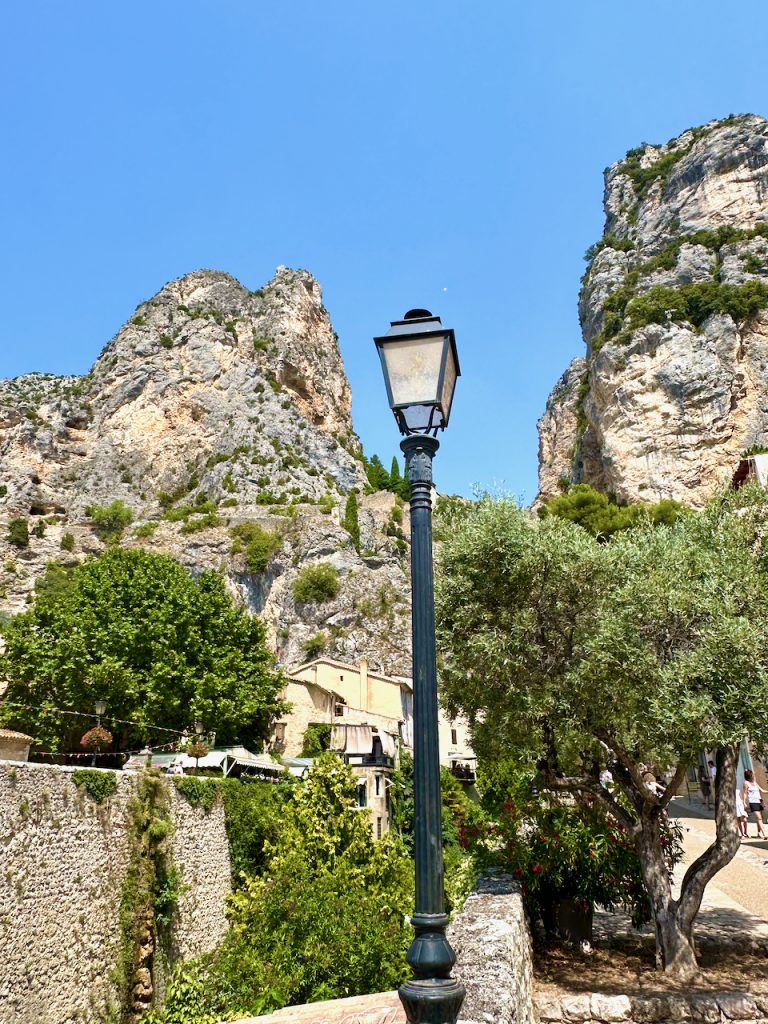
Faïence china
The history of ceramics in Moustiers-Sainte-Marie is also linked to the Crusades. In 1679 a Crusader knight returned to Moustiers and a 28-year-old potter named Pierre Clerissy started an earthenware craft shop. Clerissy began to produce ceramics after obtaining the secret of using milky white enamel and fine cobalt blue from a monk who came from Faenza, a small town in northern Italy—hence the name “faïence.”
The ceramics that were subsequently manufactured in Moustiers during the 17th and 18th centuries brought world wide fame to the tiny village. The pieces were very delicate, intricate and of such high quality that they became very sought after especially by the wealthy, including royalty, from all over Europe. Unfortunately following the French Revolution, with the ruin of the nobility, the Moustiers’ workshops all gradually closed.
A revival of the “Faïence de Moustiers” occurred in the late 1920s, with the establishment of a museum and, some years later, new workshops sprung up again. There are presently approximately a dozen of them.

Today, once more Moustiers-Sainte-Marie is known all over the world for its ceramics, created from traditional methods using three essential elements: water, earth and wood.

The revived tradition of Moustiers lives on in the beautiful pieces available for sale today. The Faïence museum in Moustiers exhibits many of the original 17th century pieces, where you can also discover the history of the Moustiers ceramics and the various processing steps used in the past.

As you wander the narrow streets of this entrancing village
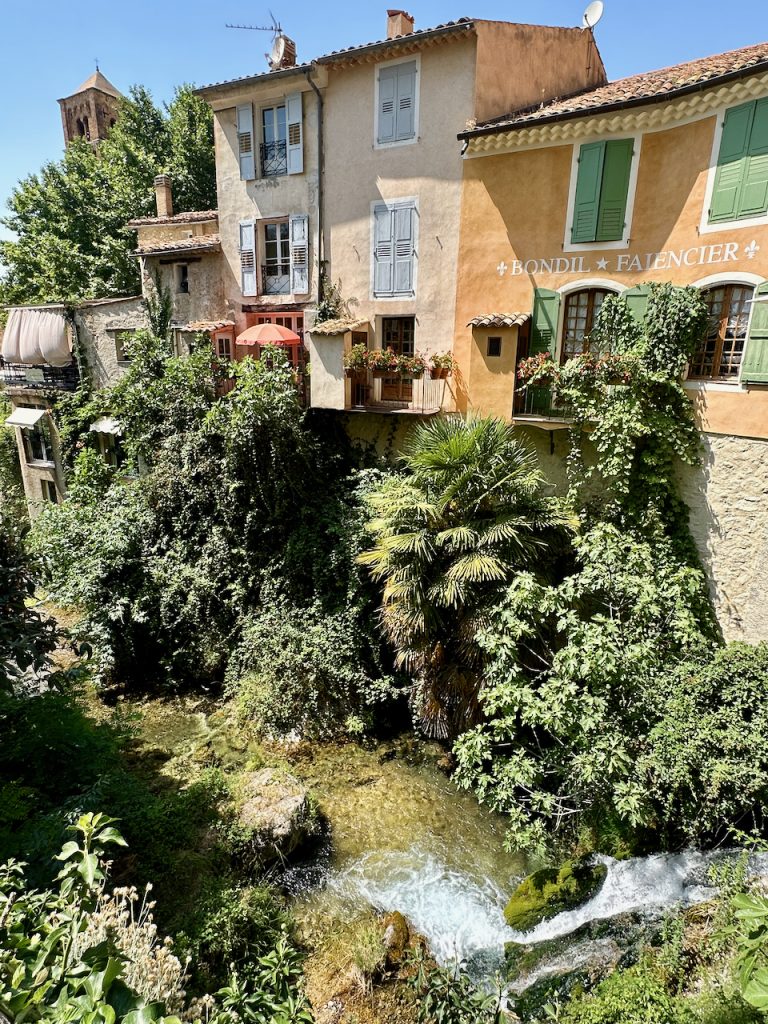
there are many alluring shops to entice you.
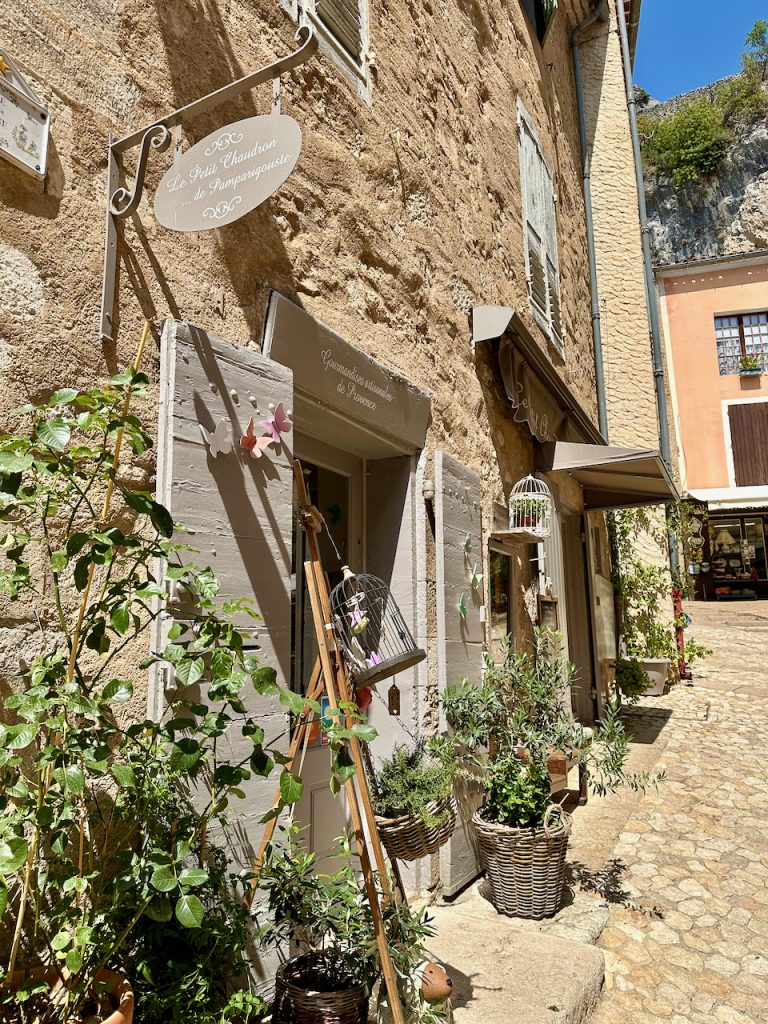
Some selling regional products like local lavender,
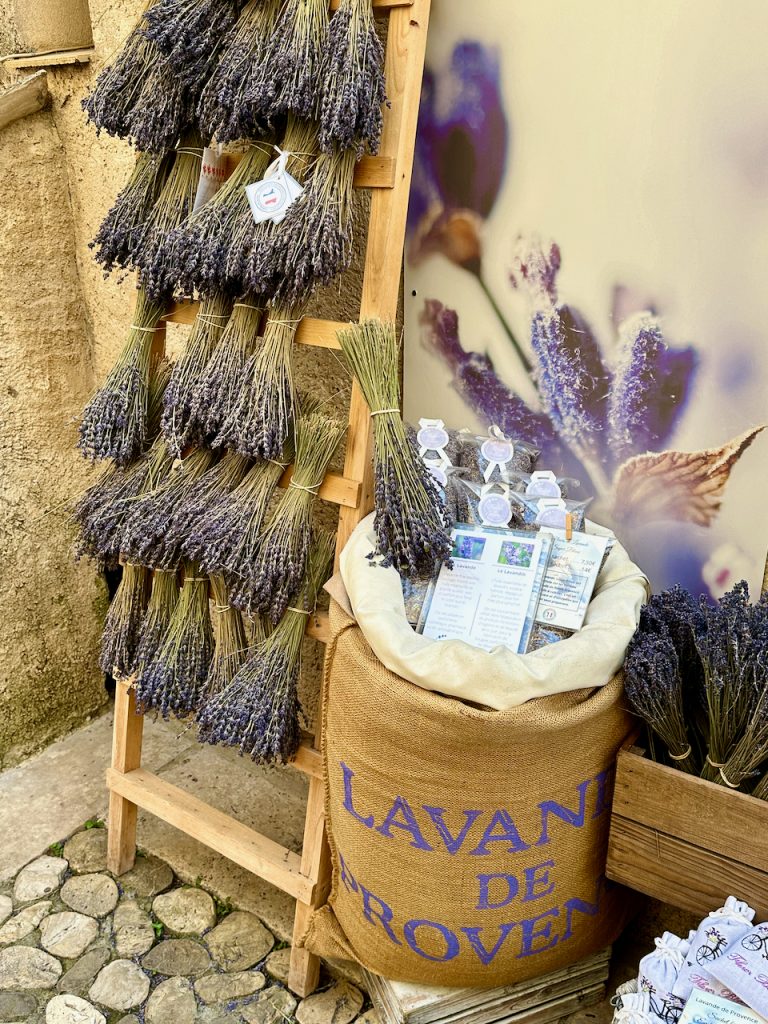
others just there for the tourists,

but nearly all charmingly Provençal in character and in style.
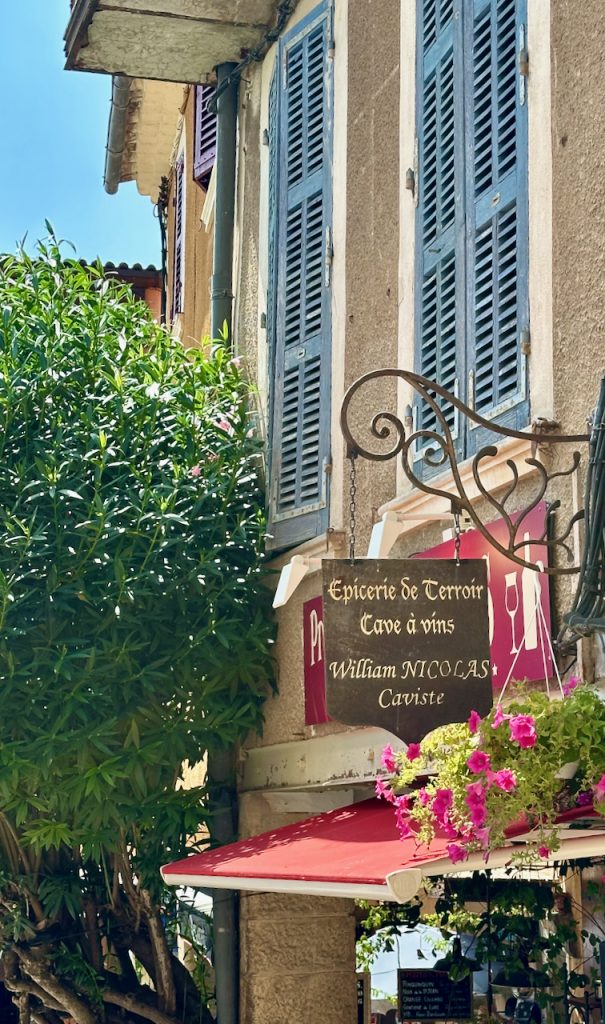
Aside from its retail charms, Moustiers-Sainte-Marie is well worth a visit, offering yet another chance to step back in time in beautiful Provence!
Click here for a map showing the location of Moustiers-Sainte-Marie



No Comment